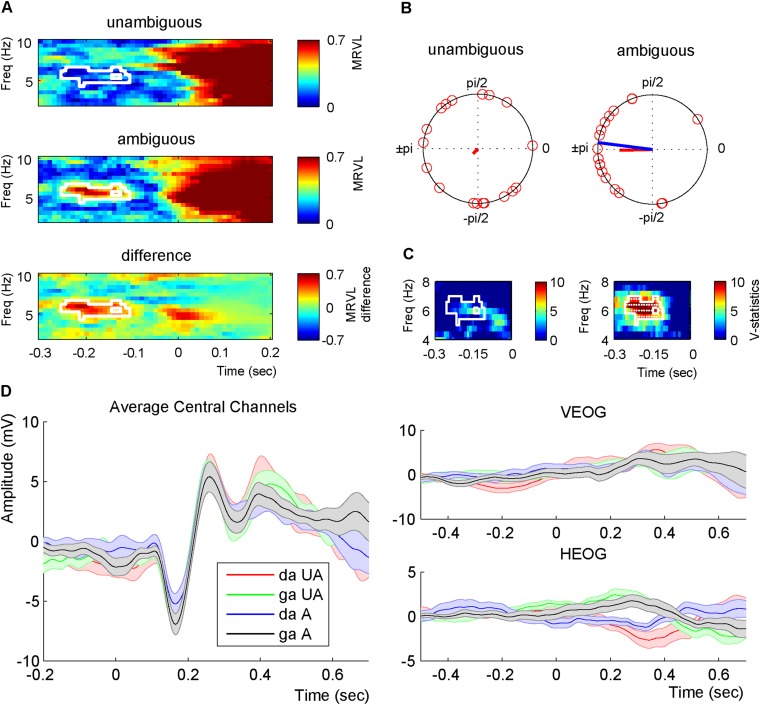Fig. S3.
Prestimulus phase differences for the original nonpadded data and event-related potentials. (A) The mean resultant vector length across participants for the phase difference between /da/ and /ga/ for the unambiguous sounds and for the phase difference between perceived /da/ and /ga/ for the ambiguous sounds. The white outline indicates the region of significant differences. (B) Phase differences of individual participants at 6 Hz at −0.18 s for unambiguous and ambiguous sounds. The blue line indicates the 80-ms expected difference. The red lines indicate the strength of the MRVL. (C) V statistics testing whether the phase differences are significantly nonuniformly distributed around 80 ms for all significant points in the MRVL analysis. The white outlines indicate at which time and frequency point the analysis was performed. White dots indicate significance. (D) ERPs are displayed of the four different syllable types [/da/ (red) and /ga/ (green) of the unambiguous (UA) and ambiguous (A) sounds either perceived as /da/ (blue) or /ga/ (black)]. ERPs are displayed for the average of the nine used electrodes (Left), the vertical electrooculogram (VEOG; Right Top), and horizontal electrooculogram (HEOG; Right Bottom). Shaded areas indicate the SEM. No significant differences were found for the ERPs.

